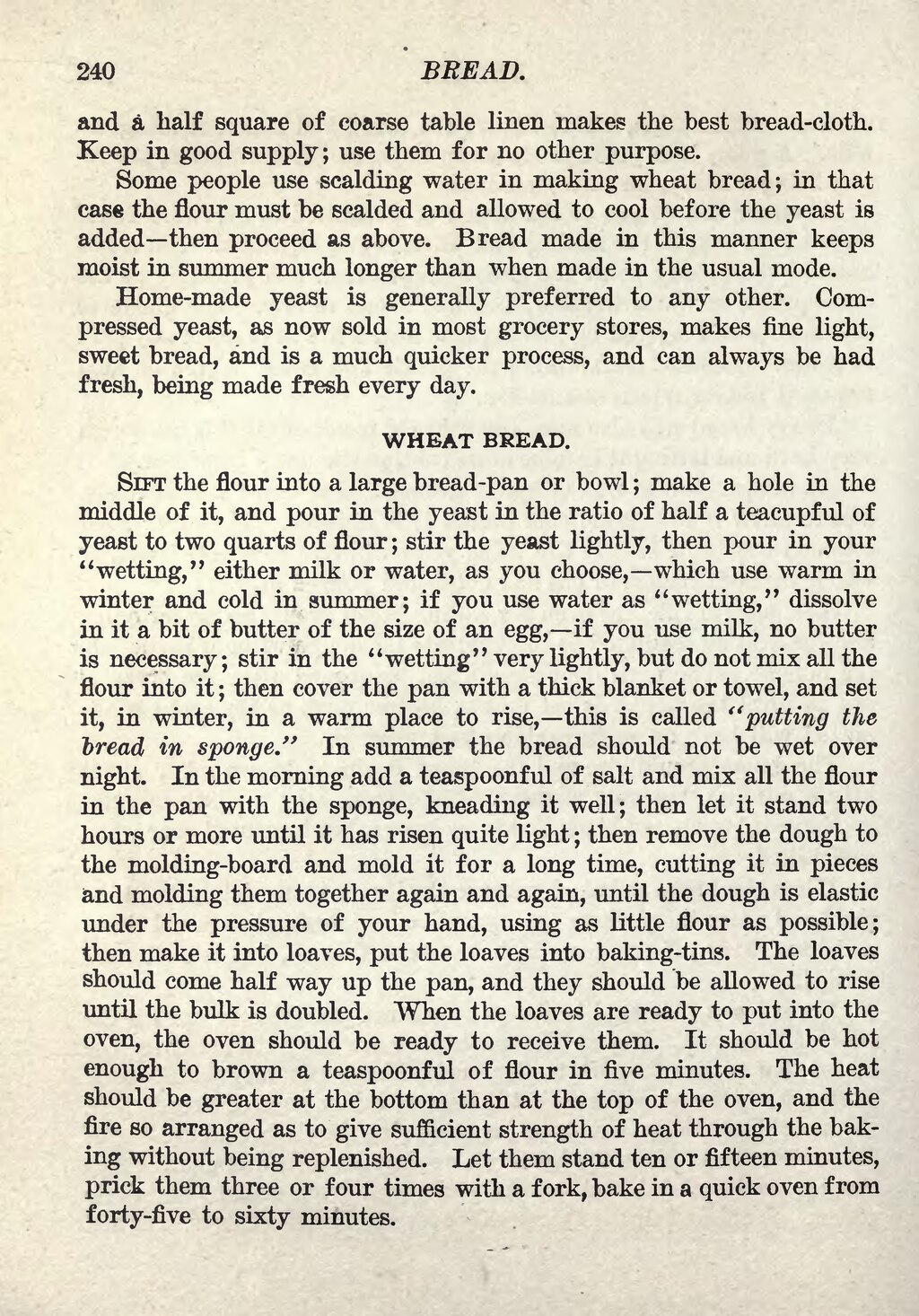and a half square of coarse table linen makes the best bread-cloth. Keep in good supply; use them for no other purpose.
Some people use scalding water in making wheat bread; in that case the flour must be scalded and allowed to cool before the yeast is added then proceed as above. Bread made in this manner keeps moist in summer much longer than when made in the usual mode.
Home-made yeast is generally preferred to any other. Compressed yeast, as now sold in most grocery stores, makes fine light, sweet bread, and is a much quicker process, and can always be had fresh, being made fresh every day.
WHEAT BREAD.
Sift the flour into a large bread-pan or bowl; make a hole in the middle of it, and pour in the yeast in the ratio of half a teacupful of yeast to two quarts of flour; stir the yeast lightly, then pour in your "wetting," either milk or water, as you choose,—which use warm in winter and cold in summer; if you use water as "wetting," dissolve in it a bit of butter of the size of an egg,—if you use milk, no butter is necessary; stir in the "wetting" very lightly, but do not mix all the flour into it; then cover the pan with a thick blanket or towel, and set it, in winter, in a warm place to rise,—this is called "putting the bread in sponge." In summer the bread should not be wet over night. In the morning add a teaspoonful of salt and mix all the flour in the pan with the sponge, kneading it well; then let it stand two hours or more until it has risen quite light; then remove the dough to the molding-board and mold it for a long time, cutting it in pieces and molding them together again and again, until the dough is elastic under the pressure of your hand, using as little flour as possible; then make it into loaves, put the loaves into baking-tins. The loaves should come half way up the pan, and they should be allowed to rise until the bulk is doubled. When the loaves are ready to put into the oven, the oven should be ready to receive them. It should be hot enough to brown a teaspoonful of flour in five minutes. The heat should be greater at the bottom than at the top of the oven, and the fire so arranged as to give sufficient strength of heat through the baking without being replenished. Let them stand ten or fifteen minutes, prick them three or four times with a fork, bake in a quick oven from forty-five to sixty minutes.
